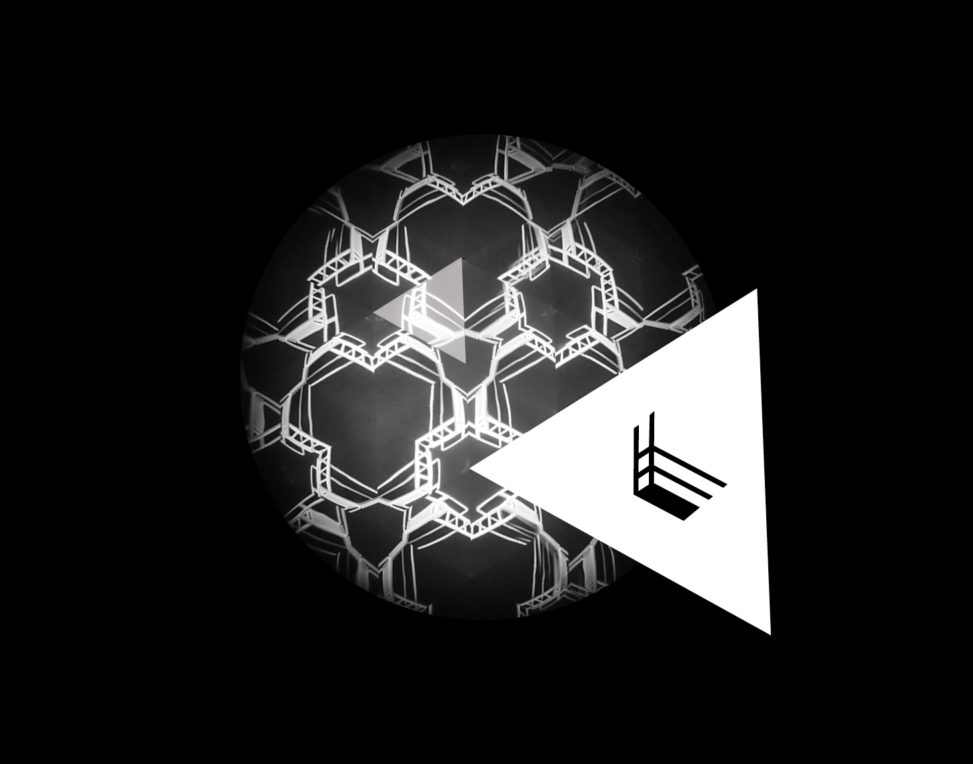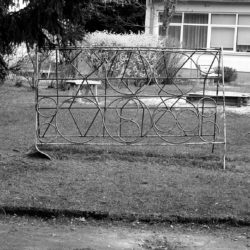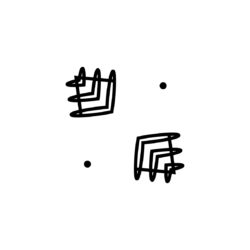2016 / Final BA project (in: graphic communication design)
Installation was inspired by nostalgia to childhood of the kid, who was born in a country under the Soviet Union (e.g. Lithuania). Spending leisure time in the children playground was his every-day routine. Rocket – a symbol of the late soviet period (due to the idea of “space conquest”) was also the most typical plaything in children playgrounds back then – was chosen as a title for the installation.
The aim of the installation was to bring the viewer (now aged 31-36) back to his own childhood memories and the goal of the project – to find a way for now rusting and more often being demolished playthings to resurrect in a new aesthetical form. Thus, patterns (created with the help of an octoscope) became a solution – a decoration method for modern home details, clothes and accessories.
Artworks and lives of artists Y. Kusama, I. Noguchi, M.C. Escher and others were a supportive inspiration for the project.
Stage I: inspiration and goal
Rusty and damaged playthings representing poor soviet times are nor aesthetic, neither safe for use of children, and thus they are being gradually dismantled. Childhood memories (despite political issues) are for many and varied reasons important to people, and there are generations that get feelings (bad, good or just sentimental) watching that proccess taking place. Are memories of childhood spent in children playgrounds also going to fade away simply like that? Is there a way to bring those playthings to life again, but in some other new form that would fit in with modern daylife?..
Stage II: process of creating patterns
Playthings being very structural and consisting of clear geometrical shapes were seen as a perfect material for creating patterns. And thus, they became a solution in the search of a new aesthetical form of playthings. Eight most common playthings found in the children playgrounds of a certain city area were chosen and were either stylized painted, or 3D printed.
An octoscope is a childhood toy that allows watching even the poorest environment in a fascinating and richer way (just like a soviet child had to constantly use his own imagination to create “things” that were not found outside). Due to that, octoscopic views of playthings were fixated.
Afterwards, newly occured forms were traced and patterns created out of them.
Stage III: objects and pattern application
For the aim was to bring playthings back to life (i.e. to be closely and actively involved in the person’s life), interior details, accessories and clothes were decorated with newly created patterns. The main criterion for the object to be decorated – it must have some sort of a link to soviet times, e.g. in usage (was used and/or can be used nowadays), shape, material, etc. For being universal and having ability to best reveal forms, the colour combination of black and white was used. Objects in other colours were painted, and patterns were hand-printed on surfaces (stencils, acryl/aerosol/textile paints), printed digitally (notebooks, kites) or embroidered. Some of the objects were bought in local stores, some were sewn and the typical soviet armchair (made in 1964) was fully restored after finding it in the gardens.
Stage IV: exhibition
Studium P (a big, non-profit, inhabited and run by artists space, that is open for creatives and their temporal exhibitions, performances, concerts or any other art related events) – was a perfect place for the exhibition, since it needed personal, cozy home environment. The center point of the installation – white 3D sculptures on the black backgrounds and 2D paintings of selected playthings. The viewer was invited to take an octoscope and to explore the fascinating views of playthings himself while dwelling into his own childhood nostalgia. The relation among all exhibited objects was based on common or personal associations, related to facts and memories of childhood times. The “cube-zone” in the middle of the room refers to monotonous structures of the soviet architecture. The plaything usually named “planet” was presented in the mirror cube.

















































